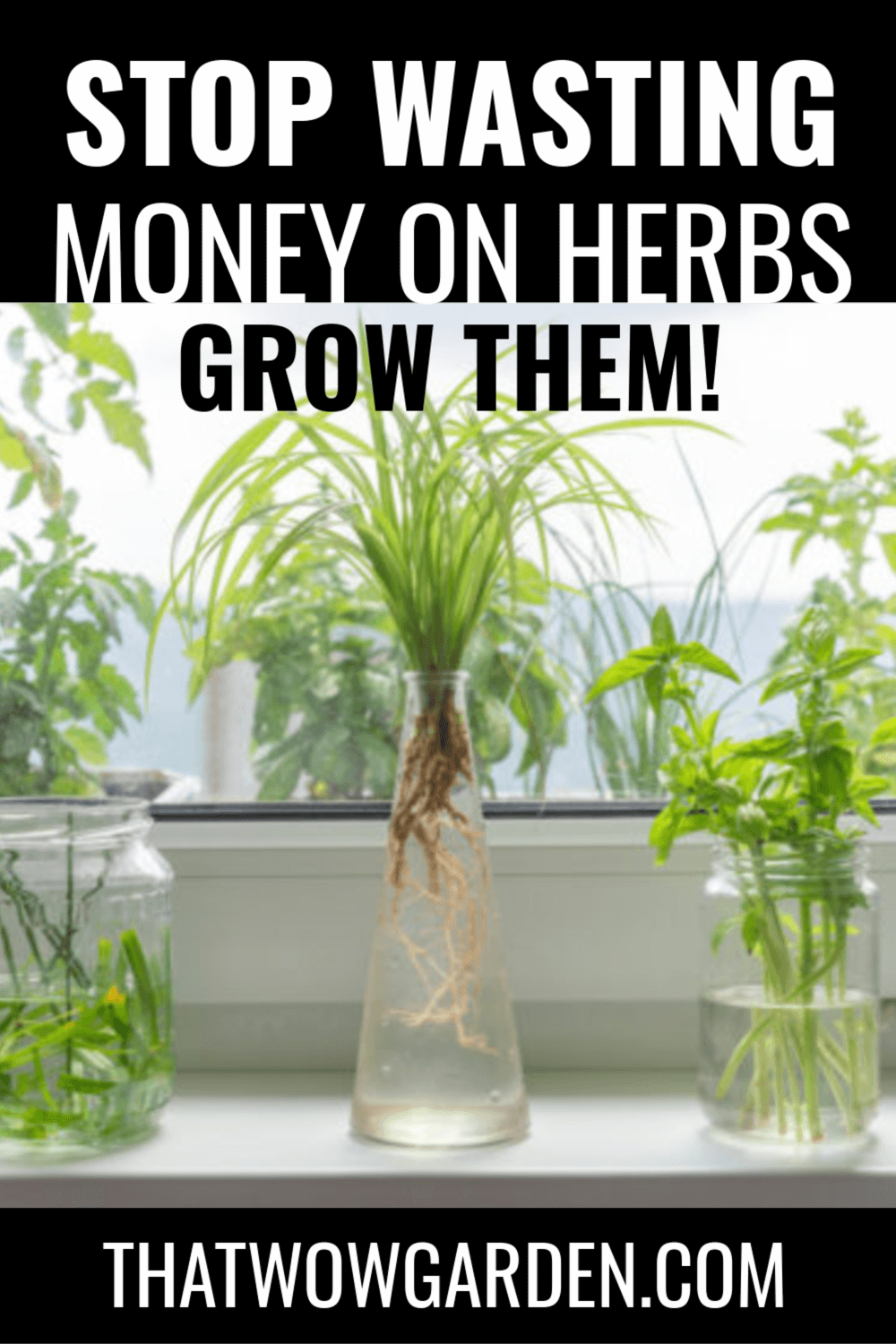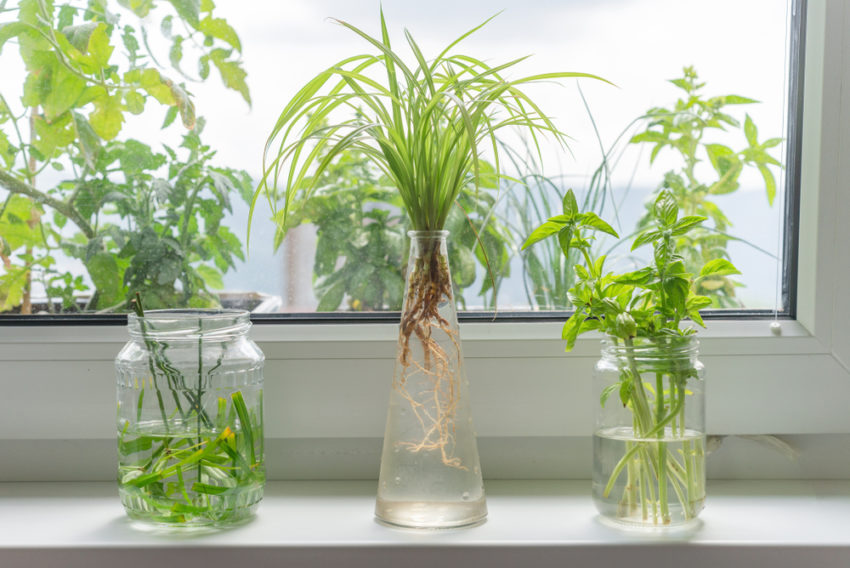Do you want to enjoy the aroma of fresh herbs all year long? Want to add some fresh mint leaves to your morning tea?
To keep that freshness intact, we have collected popular herbs that can grow in water, and no, they do not need soil. Growing herbs indoors can be tricky, yes, but following some easy tips, one can make a small green thumb indoors. So the next time you want some basil flavoring, you don’t have to whine about the dried up leaves that do not serve the purpose well. Just pluck out some leaves from your very own basil plant and enjoy all the health benefits.
From bathing soap to meat seasonings, a calming bath to room freshening, these herbs can do everything. Most of them have medicinal benefits as well if used with correct knowledge. And yes, all of these comes without the fuss of maintaining a garden and mainly the weather issue.
Why Should You Grow Herbs In Water?
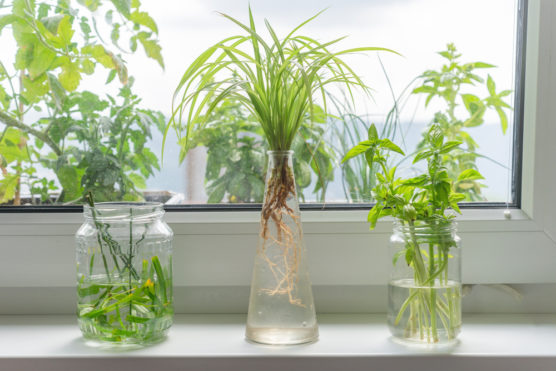
If you are a gardening enthusiast, you might be familiar with the fact that convenience is the key when it comes to establishing a green thumb at your home. Also, most of us would love to use fresh herbs for cooking, even during the coldest month.
Dried herbs are readily available in the market but they somewhat lack flavor and that unique essence. We cannot even compare the aroma of fresh and dry mint! Several herbs grow from a stem cutting, without any potting soil and can serve you fresh herbs all year long.
Most of these herbs need water and a sunny, warm spot in your home and they would bloom soon. This method also helps the herb survive the chilly winter months since you can always place it in a warm place due to a favorable size. Once the roots are fully grown, you can shift them to a soil base and make it a permanent, indoor plant.
General Guidelines To Grow Herbs In Water
When it comes to growing herbs in water, two very important things need to be considered. First, the growing vessel. One should choose it very carefully because the roots grow in volume and it would be difficult to take it out if the container is small. Rock glass and short glass tumblers which are at least 4 inches tall have a heavy base which makes it perfect for growing herbs.
The next most important thing which makes life possible on Earth is water. Tap or well water would be perfect for growing herbs. Avoid distilled water since they don’t have essential minerals that help the roots grow. For a fact, you can also use rainwater and filter it before using it.
Once the cuttings are placed, maintenance is an important thing that will help the herb grow faster and fitter. Don’t forget to change the water once a week and observe the changes in the roots. You can add some rooting hormone if the roots don’t grow within a week. Remember, if the water or the roots starts to turn green, it is a warning for extra sunlight. In such cases, blocking the base of the jar would do the job. During winter days, use daylight stimulated bulbs and show some extra care to these lovely herbs!
Check out 12 Herbs You Can Grow Indoors in Water all year long and never settle for dry herbs again!
1. Sage
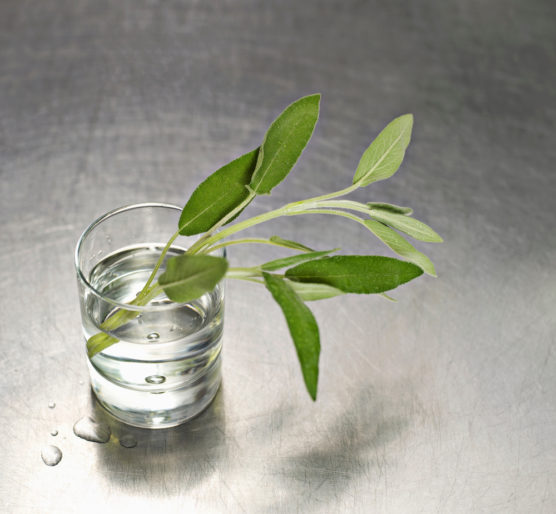
An evergreen shrub that can grow anywhere and everywhere, sage can be grown in water and is a wonderful indoor plant. You would need about 6 inches long stem, remove the leaves from the bottom to about 4 inches and then place it in a jar filled with tap water. It has an accelerated growth rate during the winter and it is likely to provide the tastiest leaves if it receives lots of sunlight. So, are you ready to add a dash of flavor to your favorite dish?
2. Peppermint
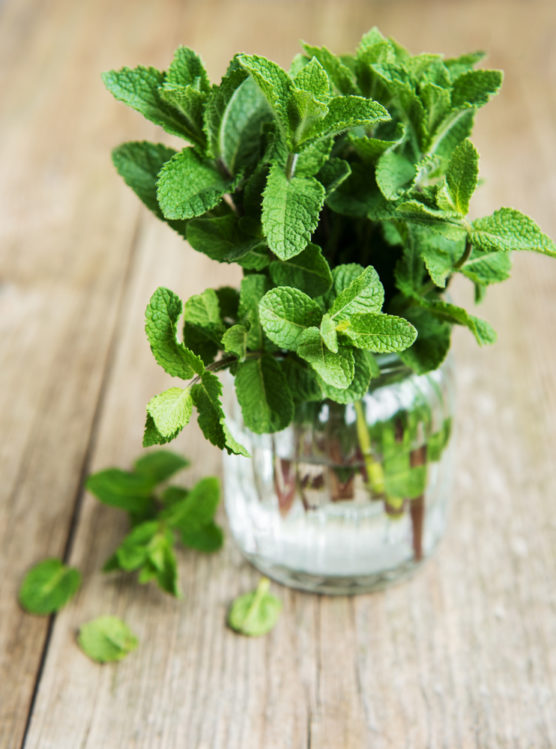
Want to grow some peppermint in a bottle of water? Take a 6-inch cutting tip from a fully grown plant and place it in the water-filled jar after removing the bottom leaves. Make sure the glass bottle is away from direct sunlight to avoid algae bloom. No matter how refreshing and soothing, Peppermint is an invasive plant, and it is better to grow it in a container than an open garden. Also, you get to see the roots grow!
3. Chives
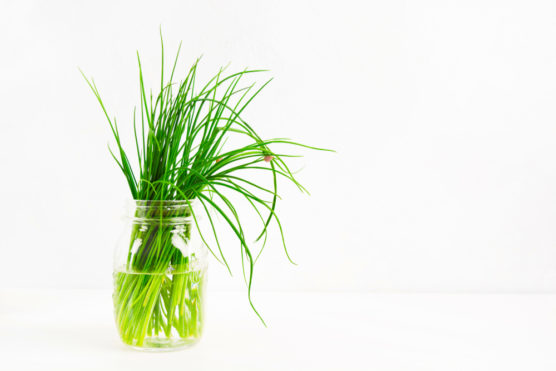
A vibrant green herb that can bring color and flavor to any dish, chives is a cold-hardy annual herb. it can grow well in water jar from stem cuttings with plenty of water and sunlight. Chives are a member of the lily family and they can be used to season tons of dishes. It is a versatile herb that adds mild garlic or onion flavor to any dish.
4. Basil
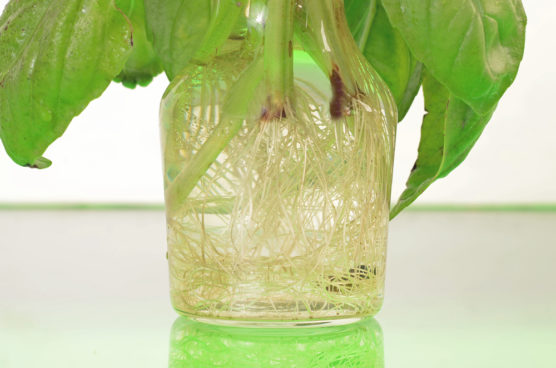
Organic herbs can get very costly, especially during the winters when they need a herb garden to survive. Assuming that you don’t have a green thumb at your place, a few basil plants and a mason jar would do the job. Add an inch of water to the jar with liquid silica to help the cell structure of your plant. Next, place the basil plants and situate it in the warmest window of your house. Wait a week or two before you see the popular pizza topping grow!
5. Thyme
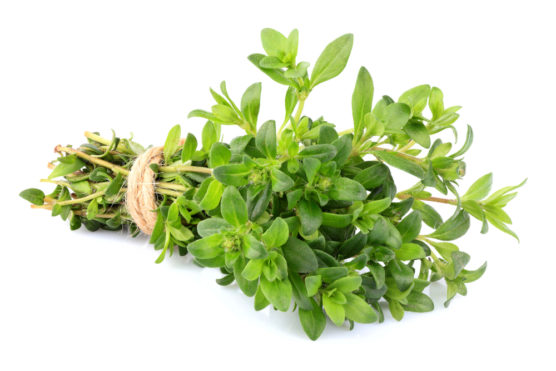
Thyme and sage seasonings go hand-in-hand in poultry dishes and if you are already done with sage, you must grow thyme as well. Place the thyme cutting in a mason jar or a glass bottle and wait a week or two before they bloom edible flowers. Also, no direct sunlight for this one as well but keep it in a warm place. Add a pinch of deliciousness to your favorite chicken dishes with fresh thyme!
6. Rosemary
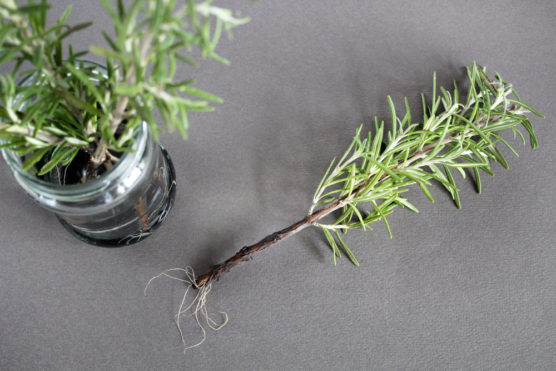
A perennial herb, Rosemary has tropical characteristics and it is challenging to keep it alive during cold winters. To solve this issue, rosemary is often grown in a water jar to keep it warm and hydrated. One must select younger shoots from the mother plant and be very careful with the cuttings since you don’t want to damage the roots. Within a few weeks, you will see new roots blooming. Once the root is developed, it likes to stay in dry soil and needs 6 hours of love from the sun!
7. Oregano
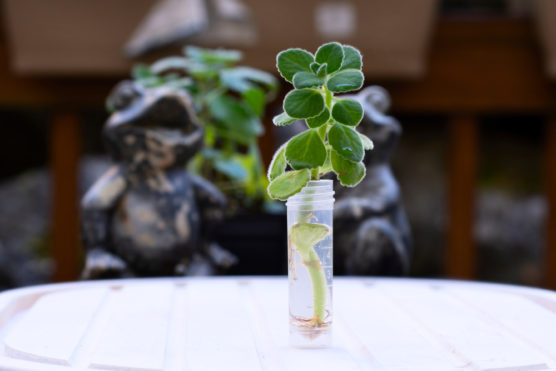
Who can forget our beloved topping that goes with everything be it pasta or pizza? A flowering plant in the mint family, Oregano is a Eurasia native and has been popular for years as a seasoning herb that you can grow from cuttings. You can grow fresh oregano all year long by cutting a fresh stem from a mother plant and potting them in a water jar. Make dipping sauces and make your evening snacking delicious than ever!
8. Lemon Balm
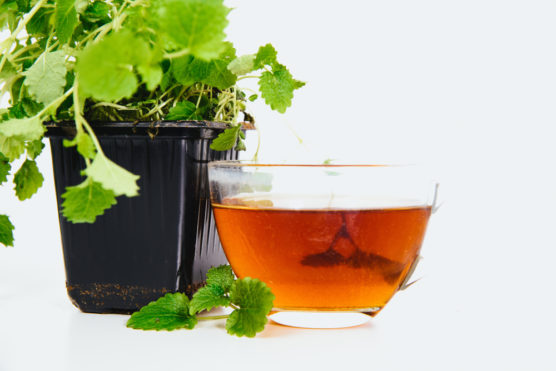
Mainly used for medicinal purposes, lemon balm can add good flavoring to food recipes as well. Take cuttings from a fully grown plant and place it in a mason jar filled with water. Try to grow it either in the Spring or Autumn because it loves warmth but no direct sunlight. It contains an antihistamine that is a disinfect used to cure bug bites. If you are up for a fresh lemonade after a tiring day, toss in a leaf and enjoy your drink!
9. Marjoram
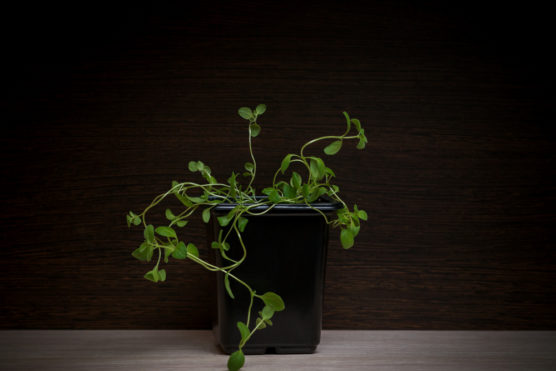
Though for faster and better growth, outdoor planting is required it can grow well indoors at a slower pace. Take the cuttings from a mother plant and make sure the roots aren’t damaged. Once you place it in a glass jar filled with water, have patience since regrowth will take time. Marjoram herbs taste delicious when combined with chicken and beef dishes. It has calming properties as well, so you can use it to make bathing soaps for a refreshing shower!
10. Stevia
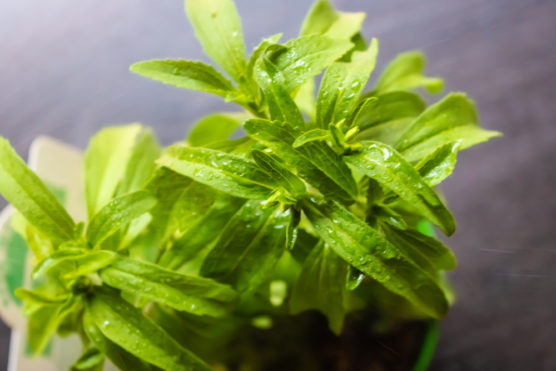
A sweetener that is a lot healthier than sugar and its byproducts, stevia is also known as stevia rebaudiana. It is a native species to Brazil and Paraguay and is a popular herb in every household. Take cuttings from actively growing branches of a stevia plant and place it quickly in a water jar to start the process. It needs warmth and ample sunlight to grow faster and healthier. Once ready, say no to sugar and use the excellent sweetening properties of a stevia leaf in your morning tea!
11. Lavender
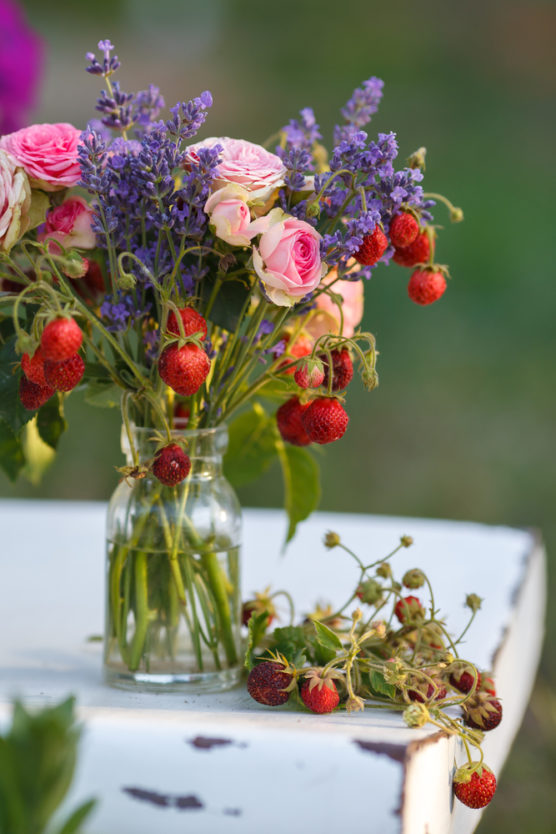
Lavender, a mass producer of essential oils, is a European native and has impressive calming effects. From cosmetics to room fresheners, lavender has a plethora of uses. You need to remove three inches from the top of the stems before placing it in a water jar. If done in Spring, it might take up to 6 weeks for the roots to grow. Dry up those leaves and use it for a relaxing bath after a tough day or enjoy a refreshing flavored evening tea!
12. Tarragon

Another annual herb that is extremely functional with poultry products or specifically protein-rich foods, tarragon is well appreciated in French cuisine. Bestowed with medicinal benefits, tarragon belongs to the sunflower family and is a North American native. Once placed in a water jar, if you want faster growth, take the cuttings in Spring. Distinctive for some and subtle herbal flavor for others, bearnaise sauce which is prepared from tarragon is an authentic accompaniment for steaks, fish, and vegetables.
Growing herbs indoor is as convenient as it seems and you can have fresh herbs all year long. Follow the guidelines well and you would have your very own herb garden in no time. So, are you ready with those glass jars yet?


